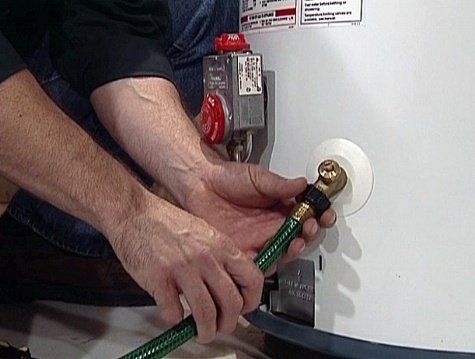DIY - Hot Water Tank Maintenance

Your water heater, like almost any household system, needs regular maintenance to keep it operating safely and efficiently. A system maintenance should be completed every six months. Here are a few tips to help keep your water heating system in good working condition. If you're not confident in your ability to perform a maintenance on your system, call a qualified service contractor.
If you're up to the task, read on!
Check the pressure valve
A pressure relief valve is installed on all storage tank style water heaters. This valve is an important safety device. It releases pressure from the tank should it over pressurize. If your pressure valve isn’t working properly, the tank could explode from excess pressure. To test your pressure valve:
- Shut off the electricity running to the unit and turn off the gas, if applicable. (Is your tank electric or fuel powered?)
- Shut off the cold-water inlet.
- Place a bucket below the pressure relief valve’s discharge pipe to collect any water.
- Pull the valve’s trip lever. If it is operating properly, there will be a minor rush of air and you may see some water and vapor come through the pressure relief valve. If not, the tank should be drained, and the valve should be replaced immediately.
Flush the tank
Over time, sediment and scale can build up in your hot water tank, lowering efficiency and clogging up your system. Flush the tank and remove sediment buildup:
- Shut off electricity and gas to the water heater.
- Shut off the cold-water inlet.
- Connect a hose to the drain valve, and route it to a drain (normally one located in the mechanical room with the tank and furnace), bathtub or other location where hot water can safely drain.
- Open the pressure relief valve. (You must do this to allow the water to drain freely. Think of it like letting your finger off of a straw full of water)
- Open the drain valve and allow all hot water to drain out of the tank.
- Once all the water has drained, close the drain valve, remove the hose, and close the pressure valve.
- Open all fixtures connected to a hot water line throughout your home, including sinks and bath faucets.
- Turn on the cold-water inlet.
- Once water starts flowing from the fixtures you’ve opened, go ahead and close them.
- Reconnect electrical and gas power to the unit.
Lower the temperature to save money
Another step you can take to save energy while you perform water heater maintenance is to lower your water heater’s thermostat setting. Lowering the temperature reduces energy use. The industry standard setpoint is 120 degrees Fahrenheit for safety as well as energy conservation.
- Locate your water heater’s thermostat; you may need to consult your owner’s manual for assistance.
- Mark the current setting with a marker and turn down the thermostat.
- In a few hours, check the temperature by turning on the hot water at the farthest tap from the water heater.
- If this setting is satisfactory, mark it on the thermostat for future reference.
You may need to make a few adjustments to find a desirable setting for your household, so repeat the process as needed.





